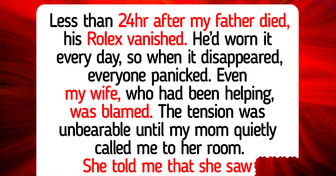I Refuse to Sacrifice My Retirement Dream for My Unemployed Son


It’s 10 PM. You suddenly feel hungry and go to the fridge. But there is nothing inside. You decide to hop to the nearest supermarket. There, you find the snack you want and pay by card.
On the way home, you wonder: Was it this easy to get food in the city a century ago? One of the streetlights flickers and goes out. You are now in the dark. Feeling scared? Now you know how people felt after sundown in the pre-electricity era.

We are so used to power that we forget that it isn’t even a century old. In 1925, only half of all US homes had electricity. Without it, nothing would be possible today. The light in your room, the refrigerator, store signs, and credit cards: they all need electricity to run. So, how did people live without it? Did our cities lie in complete darkness? Not quite. The history of illuminating our homes and streets is thousands of years old.
Recently [2022], archeologists discovered the oldest intact oil lamp. They estimated it was 2,300 years old. There is evidence of workshops that produced these lamps on a massive scale. Italian scientists have discovered similar lamps in Modena. This city was the center of oil lamp production in the Roman Empire. The workshops were so widespread that they even had different brands [Fortis, Phoetaspi, and Strobili]. Some brands were in high demand, so other manufacturers copied their maker’s marks. And you thought that fakes were a modern problem.
These oil lamps were simple in design. High-end lamps were made from bronze and other metals. But the most common material was clay. People would pour oil through the central hole and then burn a wick inside the nozzle area. The wick was mostly linen. But oil lamps were small in size and were used indoors. There was no way to light a whole street with them. The alternative was, you’ve guessed it: candles.

Humans still use candles today. Your grandma probably has a candle and a box of matches hidden in a drawer somewhere. Just in case of a power outage. Humans have been making candles for five thousand years. When you think of a candle, you think of beeswax. But the range of candle materials is pretty wide. In the Middle Ages, only the rich could afford beeswax candles. The rest of the population had to be happy with tallow. By modern standards, candles have terrible energy efficiency.
Do you remember the time when you first saw a candle and tried to touch it? Ouch. You never got that idea again, did you? Candles use a lot of energy to generate heat. That’s why they are far from ideal light sources. And the light they emit is not the kind we need. It’s infrared. Humans cannot see this sort of light. The numbers are staggering: Only one percent of candlelight is visible to us humans. Modern light bulbs are way more efficient. They shine 80 times brighter than candles.
In such dim conditions, our ancestors had to be imaginative. For instance, they covered artwork with a thin layer of gold. This technique was called gold leaf. Artists didn’t do this to make their artwork look luxurious. They wanted their paintings to glow in the candlelight. And they had another ally in the struggle against darkness. Natural light. Have you ever wondered why old churches have tall, elongated windows? Their main function was to let sunlight inside. After all, these structures were huge. There was no other way to illuminate them. Just take Notre Dame [Paris, France] as an example. It covers an area four times as large as a hockey rink. And the building was 211 feet high. That’s about half as tall as the Great Pyramid of Giza. So it made sense to build large windows.

In homes, mirrors had the same effect as windows. They would reflect natural light around the house. Before electricity, our homes were packed with mirrors. And how many do we have today? One in the bathroom and maybe one in the hallway? That’s because we no longer need them to reflect light. All those mirrors have been replaced with a simple flip of a light switch. Today, interior designers advise people to remove mirrors from their bedrooms for better sleep. Talk about a plot twist.
But what about buildings that people visited at nighttime, such as theaters and opera houses? The solution was surprisingly low-tech. Candles. Like, thousands of them. Builders mounted them on large chandeliers. But there was a problem. All those candles created heat and would burn for an hour or so, max. Playwrights and composers had to add pauses, so staff would have time to replace the candles.
Have you ever shattered a light bulb by accident? Not a pleasant experience. But luckily, you can clean the glass with a broom in seconds. Before electricity, such clumsiness cost people their lives. Knocking over a candle could start a major fire. And there was another danger. Ladies wore long dresses that presented a fire hazard. Our ancestors were literally playing with fire.

And this is all indoors. Outside the house, you would have to carry a flaming torch. Or hope that the sky wasn’t cloudy, so you could navigate by moonlight. And one smart American decided not to go out at night at all. Benjamin Franklin went to bed at 10 PM and got up at 5 AM. But over in London, going out at night created a new business. Link boys carried torches for Victorians. These youngsters would wait outside inns for patrons to come out after dark and offer their services. And they did their job in times of thick fog as well. That’s the English weather for you.
Before electricity, it was dangerous to go outside after sundown. But this was about to change in 1807. That’s when a German engineer [Frederick Winsor] lit a street in London using gas lamps. It was finally becoming possible to go out at night and feel safe. Now, these gas lamps weren’t easy to operate. At dusk, a lamplighter had to carry a torch to turn them on, so to say. And then, at dawn, they had to do another round to put out the flames. That sounds like some good cardio. And it was. During their entire career, a lamplighter could easily walk 150 thousand miles in total.
And then came electricity. In the 1870s, Thomas Edison was the first to produce commercial light bulbs. A city in the west of Romania [Timisoara] became the first place in Europe to have electric streetlights. Half of the homes in Britain had electric power by the end of the 1930s. The age of electricity had begun. But there was still room for improvement.

At the time, the most common type of light bulb was incandescent. This means that the light bulb has a filament inside that produces light when heated by electric power. This type of bulb is similar to a candle. It produces heat rather than light. And the ratio will stun you. 95% of the electricity that flows through the light bulb is converted into heat. Yes, you’ve heard it right. Only 5% of energy is used for creating actual light. Despite this, electric power has changed the way we live.
In the year 1800, only two percent of the world’s population lived in cities. And there is a good reason for this. Cities were dark places, illuminated only by candles and oil lamps. There was no street lighting. After electricity became a thing, the numbers turned. According to the World Bank, more than half of the world’s population [56%] lives in cities today. And our urban settlements look a lot different than they did just a century and a half ago. They now shine bright on satellite images. From space, Las Vegas is the city that shines the brightest at night.

But the story of illumination is far from over. In 2006, Ann Arbor [Michigan, US] became the first metropolitan area to use LED for street lighting. It is short for light-emitting diodes. This new type of lighting uses at least 75% less energy than the light bulb perfected by Edison in the 1800s. And they last longer, too: up to 25 times.











